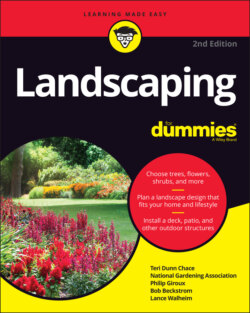Читать книгу Landscaping For Dummies - Lance Walheim - Страница 49
Keeping an Eye on the Details
ОглавлениеYou may have some favorite plants that you want to include in your new landscape. Acquire an appreciation of the subtler details of those plants before you plant, including the following:
Look at the leaves with an eye toward design attributes. After all, unless you’re growing only annuals, your plants will be mostly leaves much of the time.
Begin to notice the texture of foliage. Examples include broad and strappy, flat and wide, ferny and delicate, fuzzy, velvety, or shiny.
Consider the form of the flower. For instance, is it simple and flat like a daisy, emphatically spiky like gayfeather, or soft and wide like yarrow? Also, consider that most perennials bloom for just a few short weeks. What will they add to your garden the rest of the time?
Consider the form and habit of the full plant. That young plant at the garden center will grow into a garden member of distinct height and shape. Cast a critical eye toward the mature form, which may end up being upright, mounded, arching, single-stemmed, branching, or swordlike. Find out if the plant stays in a clump or expands over time to form a colony.
When you make your choices, contrast and combine plants so they make the most of one another. Put frilly ferns next to plain-leaved hostas, so they can both show off without competing with each other. Partner upright growers like iris or yucca with mound-forming plants and sprawlers so that they can stand like punctuation points. Echo colors, leaf shapes, and forms to create beds of delicious texture.
In other words, play with your plants. Don’t worry if you don’t get it picture-perfect on the first try. The best part of gardening is that if you decide you don’t like a combination, hey, there’s the shovel. Part 3 gives you the ins and outs on different plants you can include.
